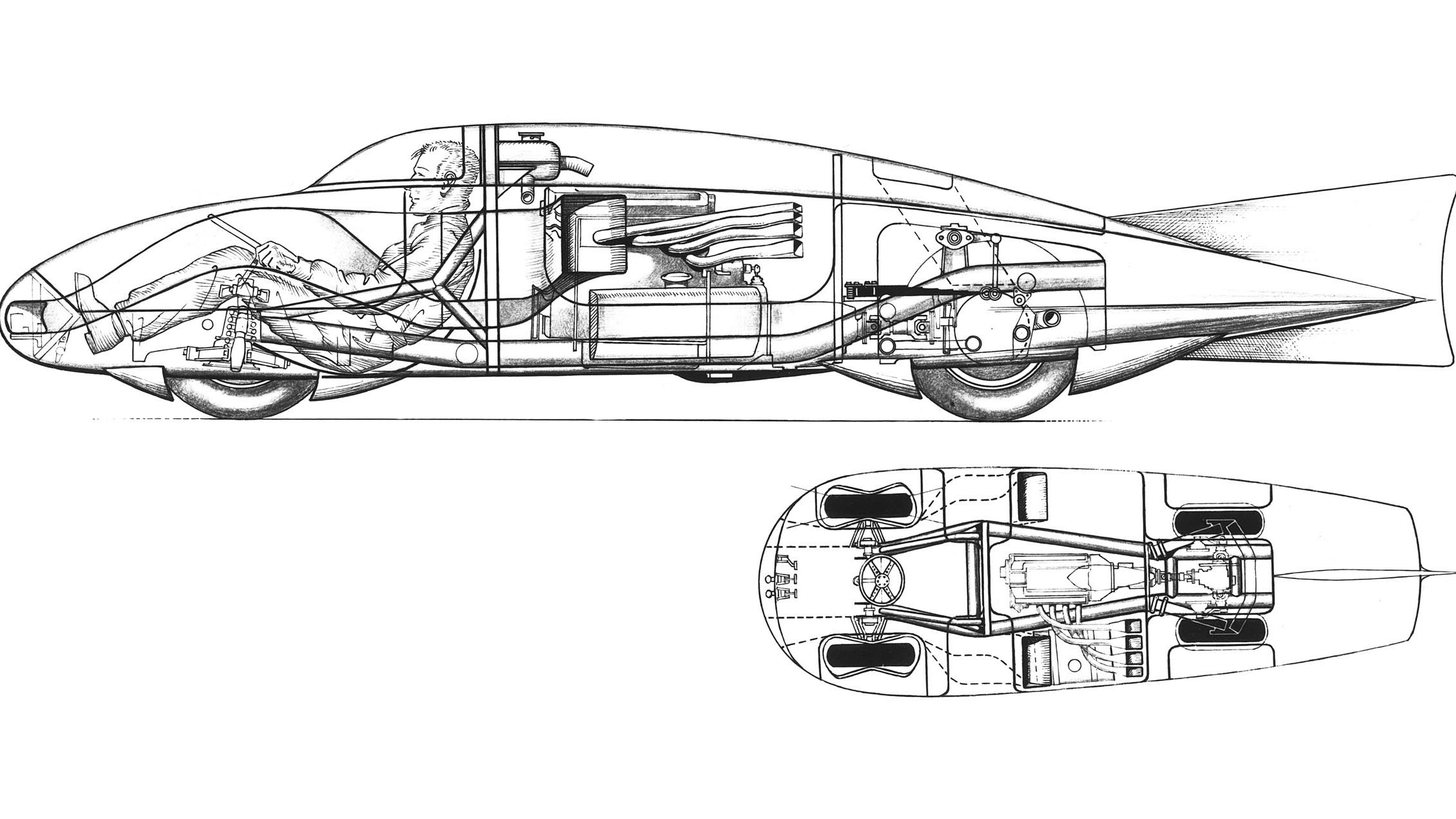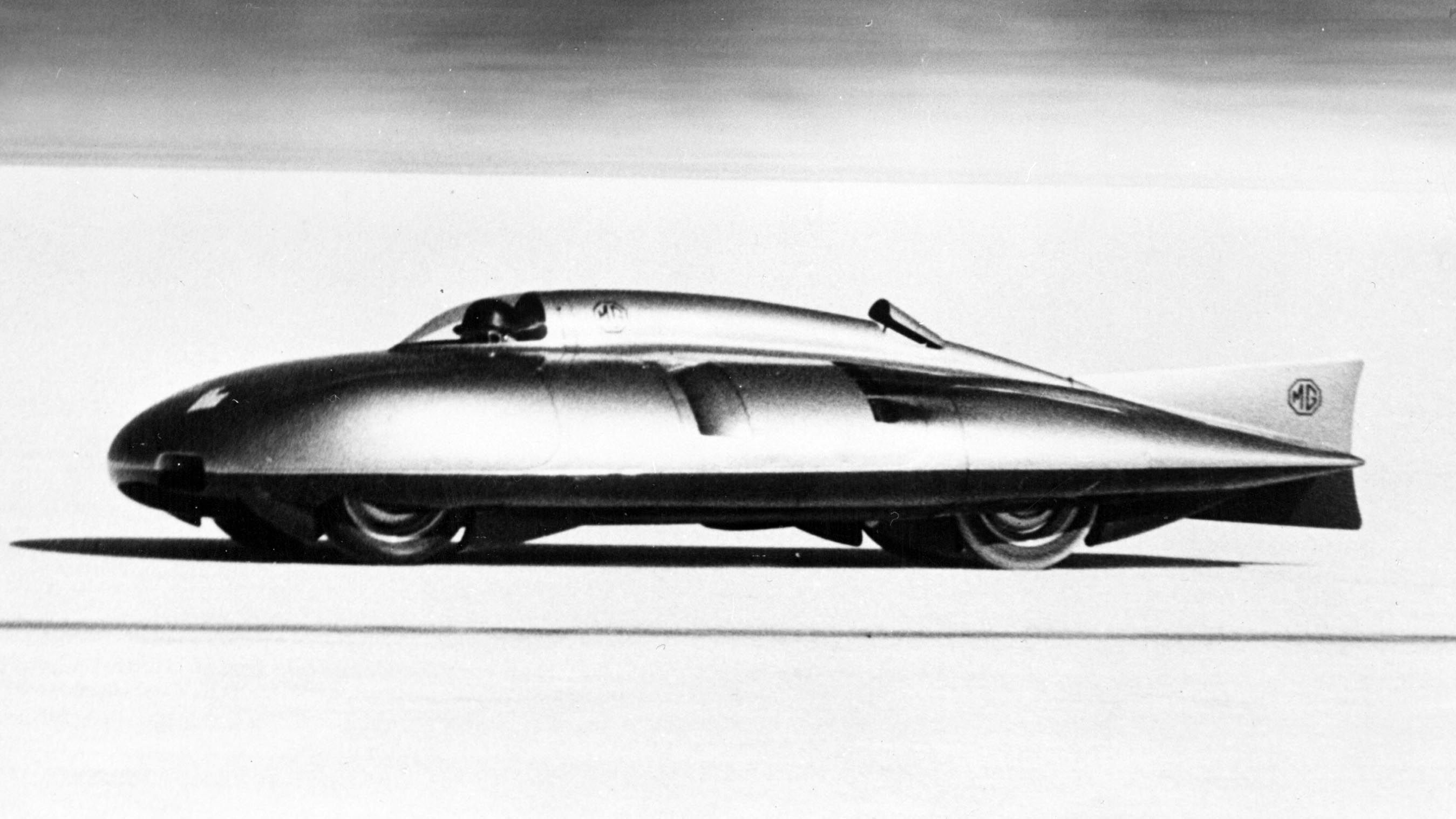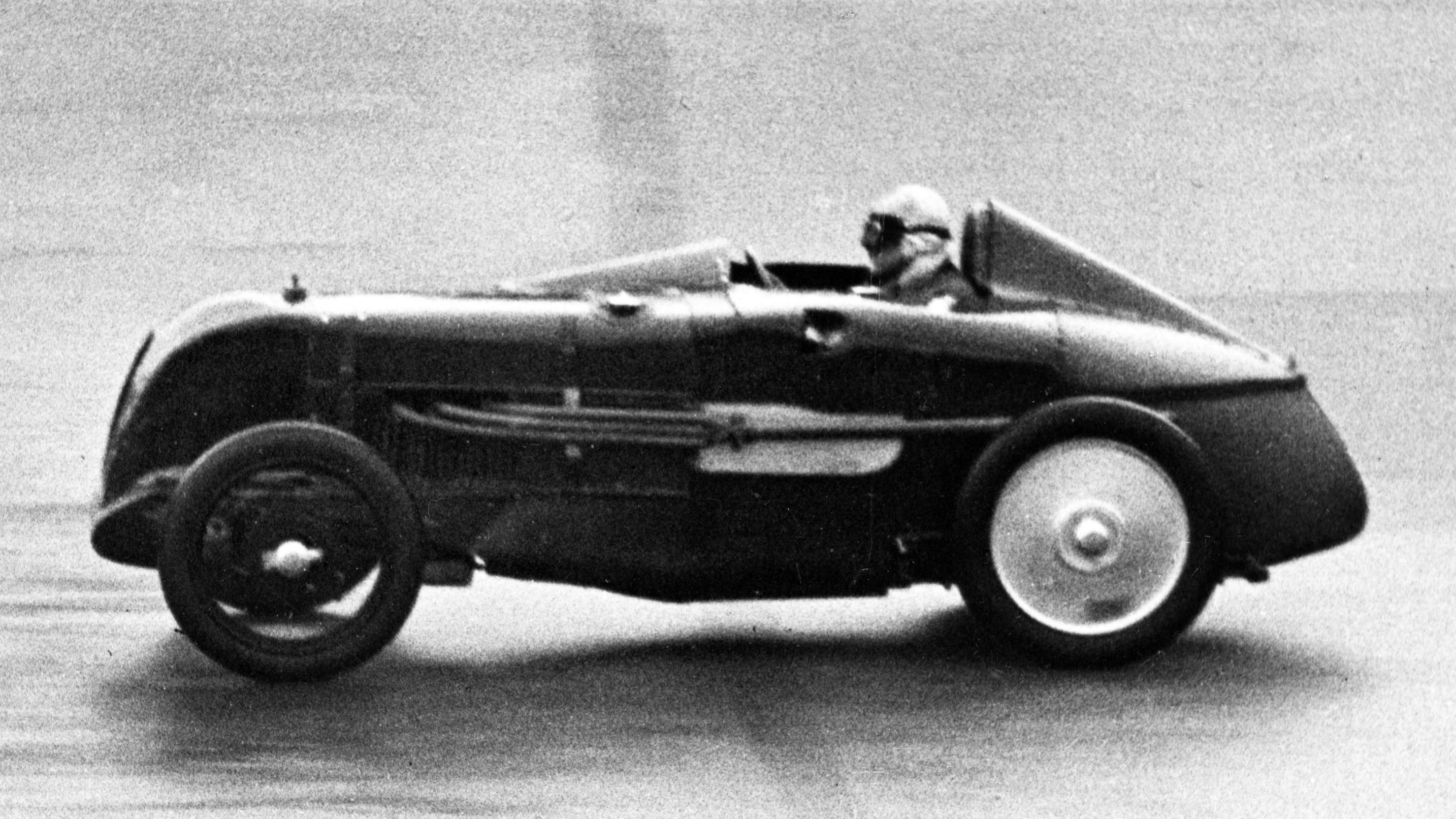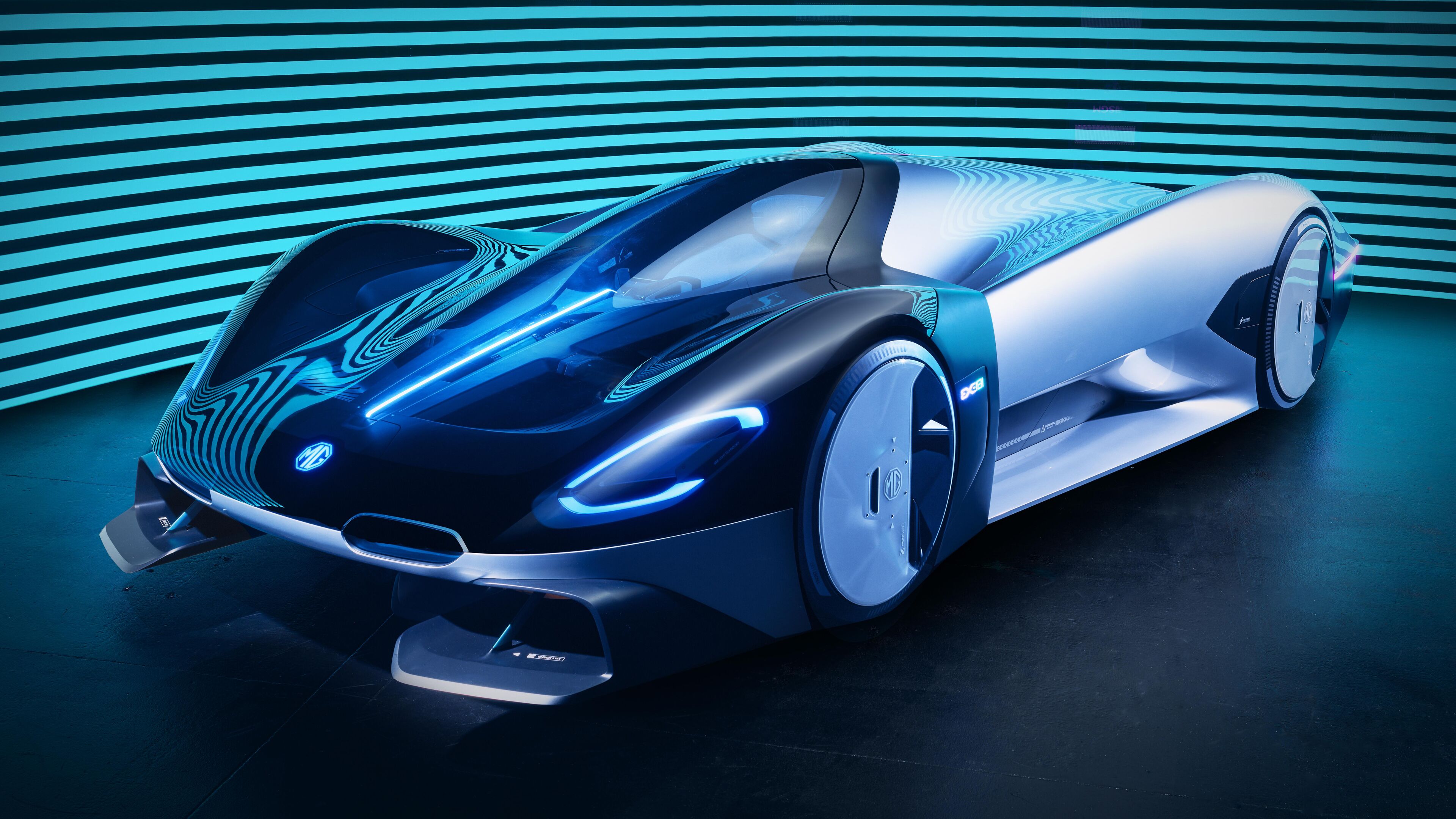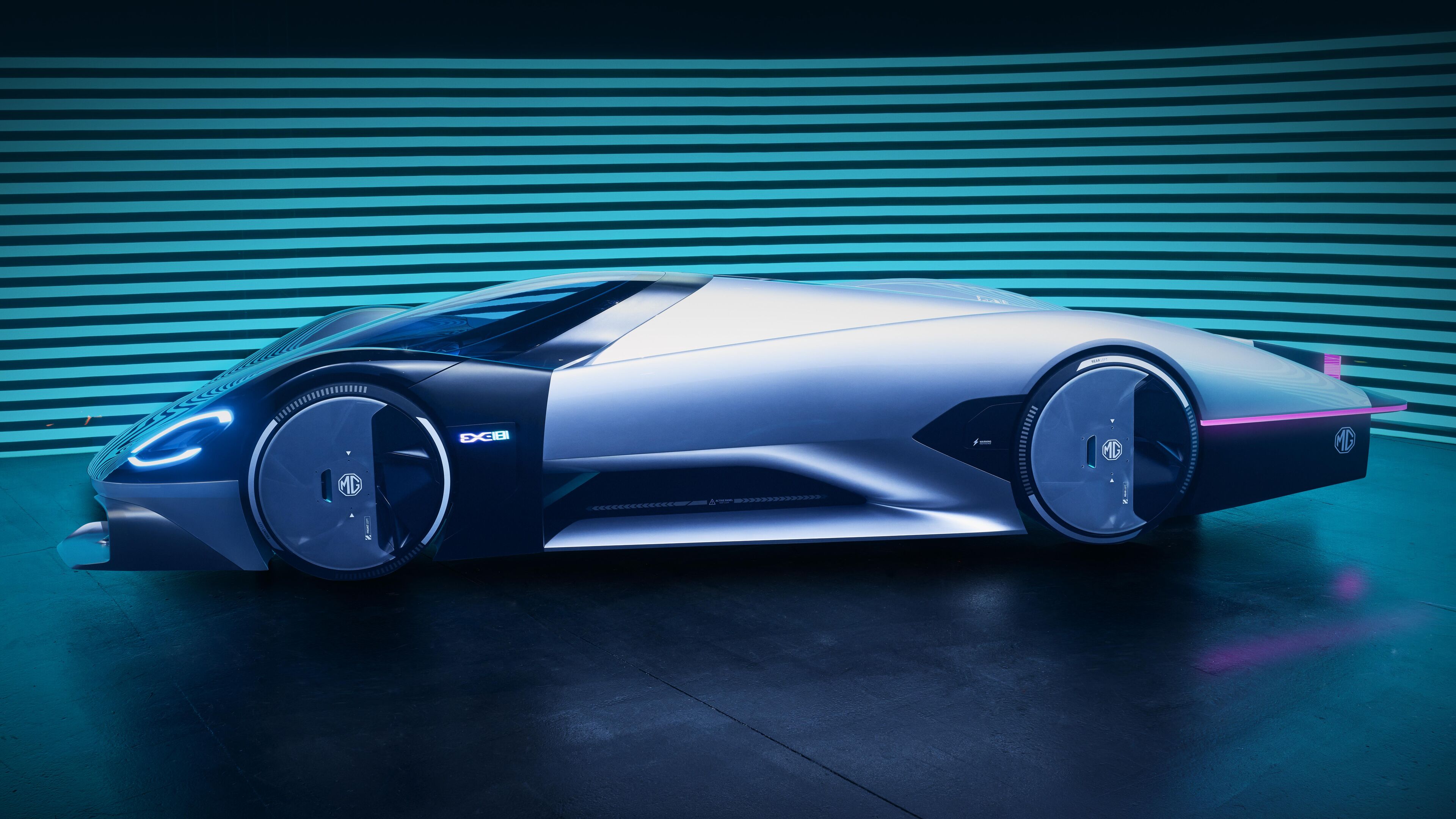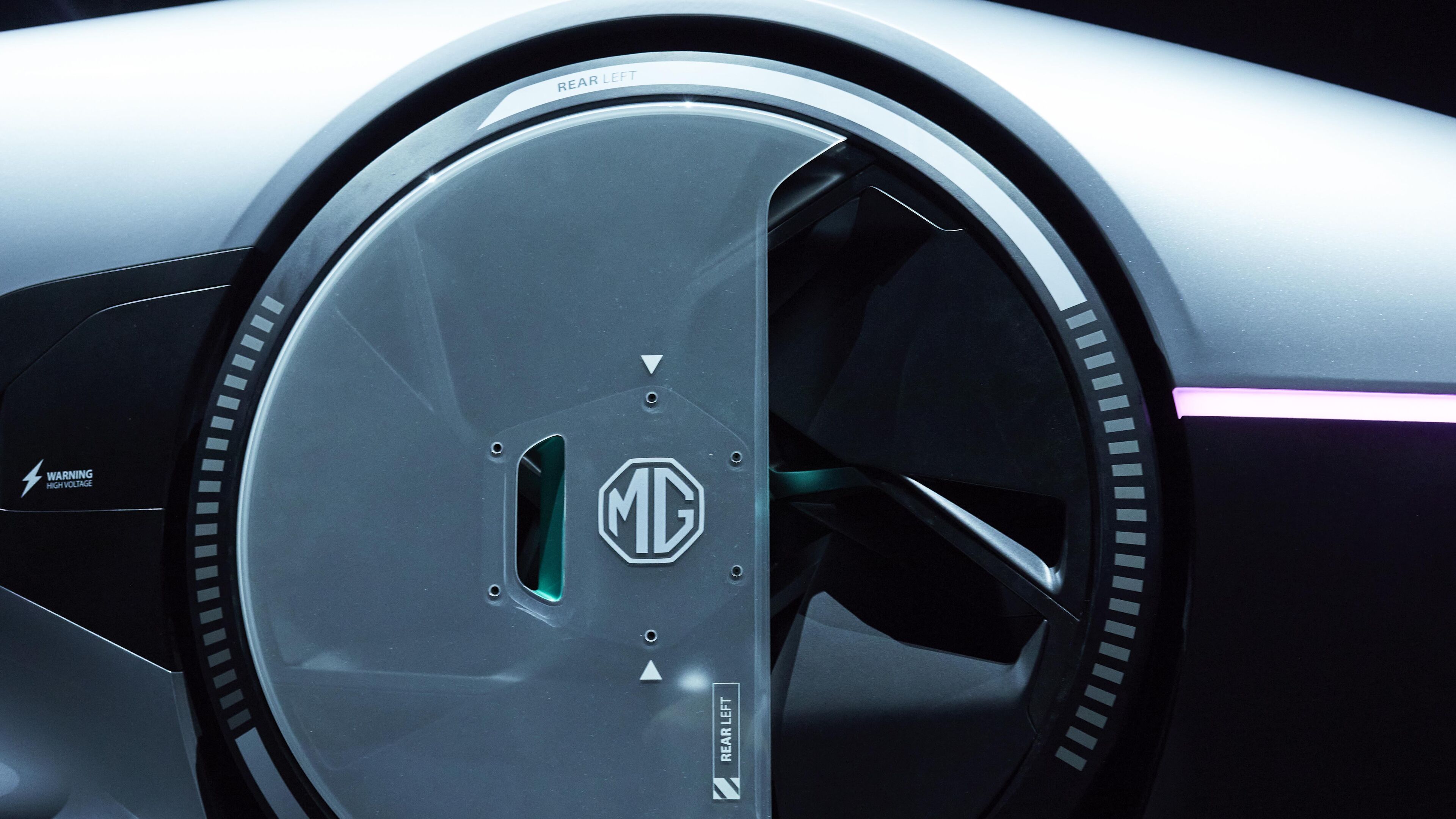
The MG EXE181 concept pays homage to the EX181 Land Speed car of 1957
This really is an MG, and the original car it's based on is the fastest MG ever made. But what's the point of this new electric concept?
“One hundred per cent this is an MG. It ties in with the production cars coming, it’s not just a throwaway thing.” So says Carl Gotham, European advanced design director for Chinese megacorp SAIC, current custodian of ‘British’ MG. And he’s talking about the EXE181, an electric, perspex canopied, single-seat streamliner with more swoop than a flock of agitated starlings. It’s a mad thing, a knee high throwback to the golden age of concept cars when manufacturers would arm their motor show stands with bizarre 4,000bhp fever dreams powered by dark matter and constructed from nothing but alloy of unobtanium. But there really is history here, even if SAIC is mining a seam of MG gold that has very little to do with the company’s contemporary product. Mind you, Gotham is such an effortlessly charming and honest human – based at SAIC’s London design office in Marylebone – it does actually make sense.
Of a sort. But the modern design gambit really isn’t the current corporate ownership of MG, but some of the undiscovered country that is MG’s storied history. Back before electric MG4s and value driven transport, platform sharing and the complex web of industrial ownership, MG was a feisty, adventurous little business that very much aligned to the ‘because we can’ school of advancement. You can just imagine several fellas in brown Morris Garages shop coats standing around and making things for the hell of it.
That stuff goes way back to the 1920s and 1930s. From ‘Old Number One’ based on a Morris Cowley chassis that competed in the 1925 Land’s End Trial – a kind of on/off-road regulation rally – driven by MG founder Cecil Kimber himself, to supercharged K3 Magnettes of the 1930s raced by Tazio Nuvolari and later at Le Mans by Eccles and Martin. MG’s racing madness stretched from the Mille Miglia to the Monte Carlo rally, all the way to postwar TCs, and various other T-based alphabet cars.
Photography: Wilson Hennessy
Historic images: Motoring Picture Library
The whole thing is a proper little rabbit hole of things you didn’t know about MG. And if you fall into that particular void, it turns out that the racy versions weren’t even the most exceptional MGs. Those were probably the ‘EX’ cars. The 1931 EX120 based on the 750cc Brooklands M-Types (M for midget) of Eyston and Eldridge, to the EX135 based on a K3 Magnette piloted by the fantastically named Goldie Gardner, MG was never afraid of doing something a little weird. And as a company, it managed through light cars, smaller engines and better power and efficiency. Things particularly relevant today.
The EXE181 pays homage to one of MG’s best ever projects: the MG EX181 land speed car of 1957. The extra ‘E’ for the modern concept denotes the powerplant. You want some famous names? None other than a young Stirling Moss piloted the original Roaring Raindrop to 245.64mph at Bonneville Salt Flats in the summer of that year, bringing the Class F record back to good old Blighty, with US driver Phil Hill heading back in 1959 in a slightly modified, finless car to hit 254.91mph. Still the fastest MG ever made.
The interesting thing was that the original Moss EX181 wasn’t some massively over- engined monster, but a car that made the absolute most of what it had, much like all the MG ‘EX’ specials. Powered by a relatively tiny MGA 1.5-litre, four-cylinder Twin Cam, it made 290bhp at 7,000rpm thanks to a Shorrock supercharger and a couple of lungfuls of SU carburettor. The fact that it was drinking 86 per cent methanol laced with nitrobenzene, acetone and sulfuric ether probably helped – essentially making the cars steerable munitions – although you really wouldn’t want to stick your head into the fuel tank to check, nitrobenzene and sulfuric ether being a cocktail extremely toxic to carbon based lifeforms.
The rest was down to the extraordinarily elegant aero, the fluid forms of which made for an exceptional looking vehicle. Part torpedo, part car, with a little bubble of a windscreen – barely big enough to fit Hill and Moss’ helmets into – that originally flowed into a stabilising upright tailfin. A tailfin that was later removed to reduce drag, making the EX181 a proper bullet. And it would have taken excessive amounts of confidence to drive the little raindrop – stripped of its aluminium skin, the EX181 has the driver’s feet almost between the front wheels. Mistakes would have been corporally punished. Still, as inspirations go, it’s about as good as it gets.
You can actually see where Gotham and his team was going with the EXE181. The aero produces a coefficient of drag of 0.181 (hence the name, the same as the Moss/Hill car), and there’s the same central spine and bubble, the same sense of cab-forwardness with the airbending tail looped out behind. The modern version ‘would’ feature a quad motor electric drivetrain good for roughly 1,000bhp easily enough, and the interior is much more comfy than Moss and Hill’s surroundings: a yoke with digital display, some really cool materials – like tweed – and properly sophisticated looking inboard suspension as seen through the perspex nosecone.
There are aero wheels, a fully developed enclosed floor, a tail section that you could happily picnic a football team on. It’s not real, but it’s also not complete fantasy, Gotham having worked with an aero team to make sure the car would actually perform if pressed. The good bit is that you can actually see where Gotham’s team was coming from. The EXE181 isn’t anything like the original, but it takes heavy inspiration – a concept where the backstory and context is as important as the car itself. Isolated, there’s a world of difference, but once you’ve seen the original, the familial line is obvious.
But are concepts pointless? Given that designers can render pretty much everything in virtual reality these days, what’s the point of a physical concept car? Gotham again. “They’re a chance for everybody in the studio to exercise their creative muscles, it’s really important when we’re also working on production work because it allows that exploration of new ideas and new forms. Maybe some new language or signature that we can potentially use elsewhere, or stretch what we’re doing with production cars a little bit further as well.”
Top Gear
Newsletter
Thank you for subscribing to our newsletter. Look out for your regular round-up of news, reviews and offers in your inbox.
Get all the latest news, reviews and exclusives, direct to your inbox.
So you might not see an actual MG EXE181 hit the streets, but it might birth some detail or aerodynamic tweak that makes it somewhere else, the seed of a design dandelion floating from one place to another. But that’s not the only point. Gotham, it turns out, is just a car guy, and he’s got half an eye on the cool stuff that MG used to be famous for, no matter who owns what in 2024.
“There’s a lot of storytelling here – stuff that a lot of people just might not be aware of with MG. This kind of pioneering spirit, this maverick attitude of the MG brand of old, and we want to revive that as a catalyst for new things to happen.”
So the MG EXE181 isn’t the point, but the creative process lends itself to having an anchor in a pretty spectacular history, and the stories behind it. MG may no longer be a UK manufacturer – Chinese state-owned is about as far from that as it’s possible to get – but that doesn’t mean that MG’s back catalogue isn’t worth knowing about, and celebrating.
Which makes you wonder what Gotham will have a go at next. Maybe a modern replacement for the MG SV V8 super saloon? We can but hope.
Trending this week
- Car Review
BMW iX3







